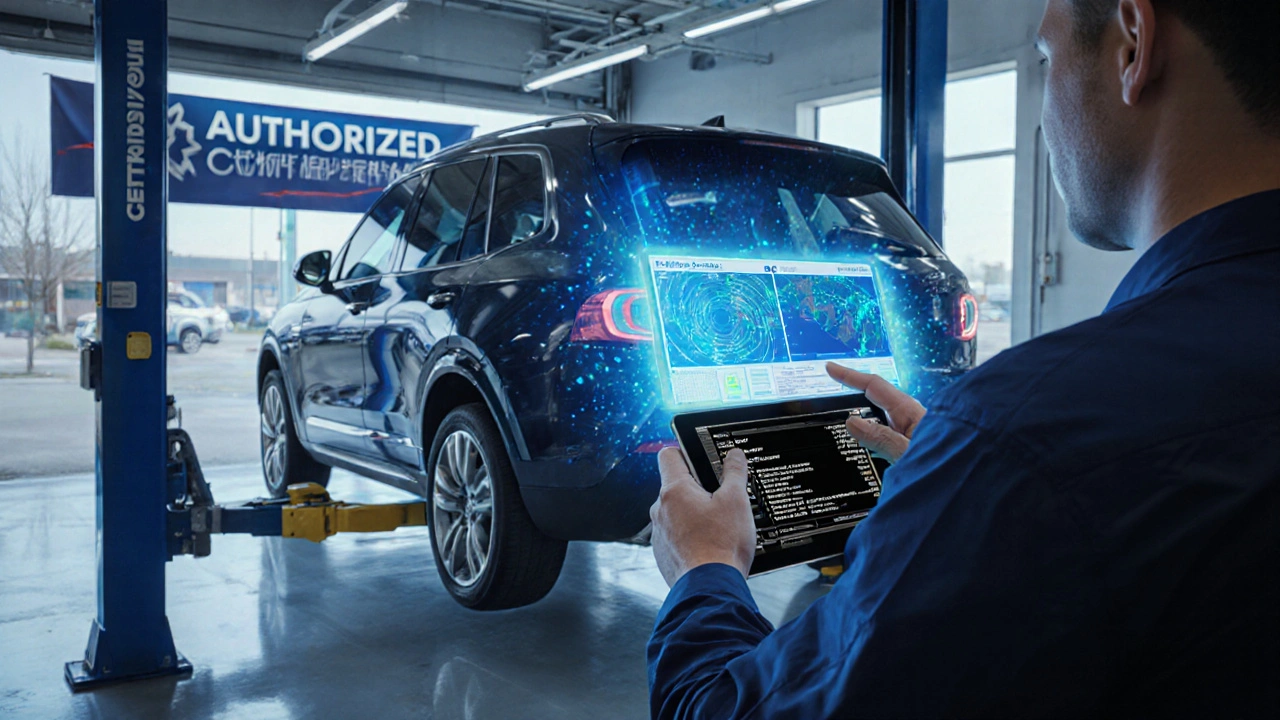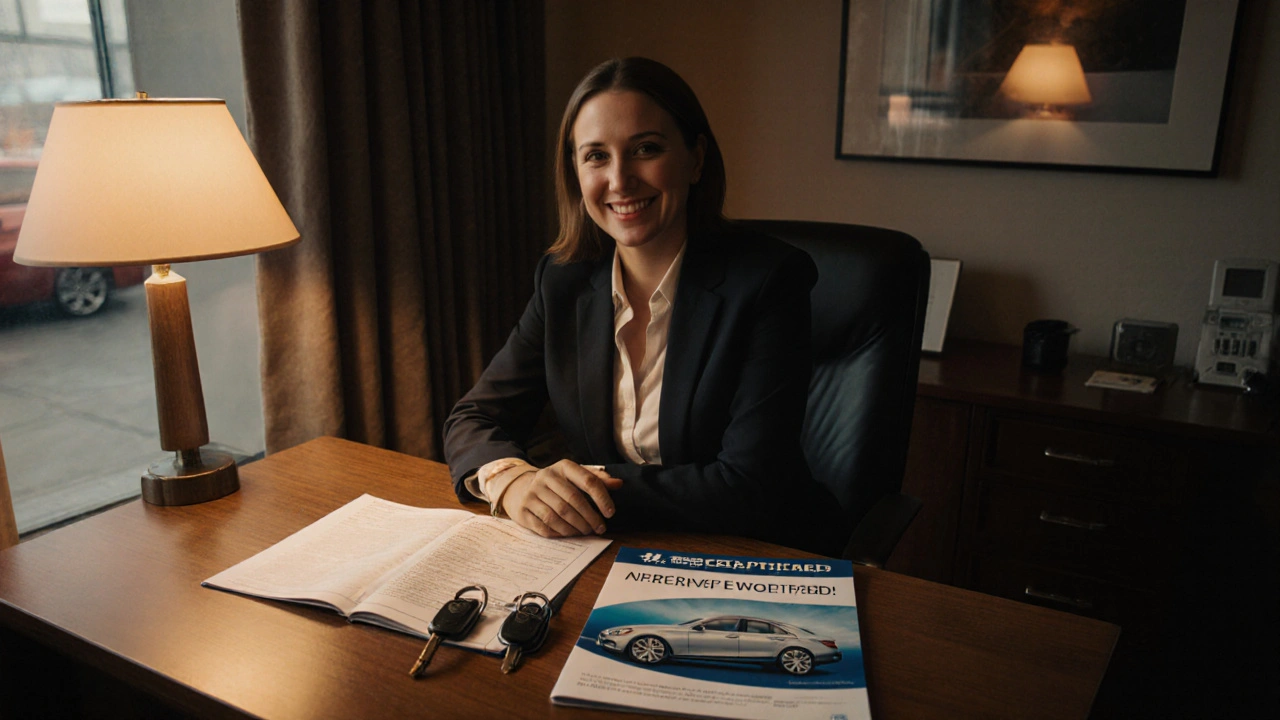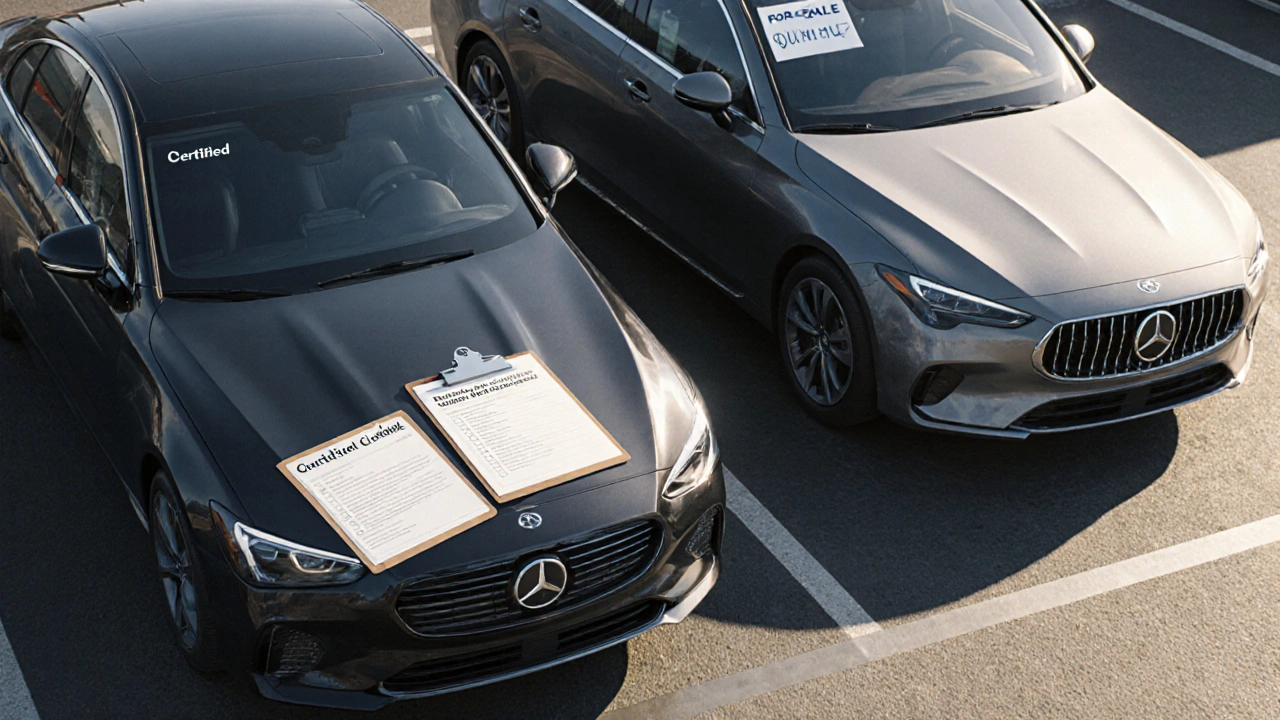Certified vs Pre-Owned Cost Calculator
Calculate Your Savings
Cost Comparison Results
Pre-Owned
Total Cost: $0
Initial Price: $0
Maintenance: $0
Depreciation: $0
Certified Pre-Owned
Total Cost: $0
Initial Price: $0
Warranty Savings: $0
Depreciation: $0
Quick Takeaways
- Certified pre‑owned cars come with a manufacturer‑backed warranty and a rigorous multi‑point inspection.
- Pre‑owned cars are sold “as‑is” unless the dealer adds a limited warranty.
- Vehicle‑history reports are essential for both, but certified programs often include free reports.
- Pricing for certified cars is higher, but depreciation slows down faster.
- Buyers should compare inspection checklists, warranty terms, and dealer reputation before deciding.
When you’re hunting for a used vehicle, the terms certified pre‑owned cars and pre‑owned cars get tossed around like they mean the same thing. In reality, they sit on opposite ends of a quality spectrum. Understanding the gap helps you avoid surprises and choose the option that matches your budget and peace‑of‑mind needs.
What Is a Certified Pre‑Owned Car?
Certified pre‑owned car is a used vehicle that has passed a manufacturer‑approved inspection and carries a warranty backed by the original automaker. The inspection typically covers 150+ points, ranging from engine compression to electronic system diagnostics. After the check, the dealer adds a special badge and a limited‑time warranty that mirrors new‑car coverage for major components like powertrain, suspension, and electrical systems.
Because the warranty is backed by the maker, claims are handled through the brand’s service network, not just the dealer. This adds a layer of trust - you’re not relying solely on the dealer’s goodwill.
What Is a Pre‑Owned Car?
Pre‑owned car is any used vehicle that is sold without the manufacturer’s certification. Most dealers will perform a basic visual check, but the depth varies widely. Some may only confirm that the car runs and looks clean; others might run a limited diagnostic scan. Unless the dealer offers a separate warranty, the buyer purchases the vehicle “as‑is,” meaning any repair after the sale is the owner’s responsibility.
These cars are typically priced lower than certified equivalents, reflecting the reduced assurance and the absence of a factory‑backed warranty.

How the Inspection Process Differs
The cornerstone of a certified program is the inspection checklist. It includes:
- Engine performance tests (compression, oil pressure)
- Transmission shift quality verification
- Brake pad thickness measurement
- Electronic module diagnostics (ABS, airbags, infotainment)
- Frame and undercarriage corrosion assessment
Dealers must be authorized certified dealer locations, meaning they’ve met brand‑specific training standards and have access to proprietary diagnostic software.
In contrast, a standard pre‑owned sale often relies on a basic visual and road‑test inspection. While a savvy dealer might still use a scan tool, there’s no guarantee that all critical systems were checked, and the results aren’t usually documented for the buyer.
Warranty and Coverage Comparison
One of the biggest draws of a certified pre‑owned car is the manufacturer warranty. Typical coverage includes:
- Powertrain - up to 7 years or 100,000 miles
- Bumper‑to‑bumper - 1 to 2 years from purchase
- Roadside assistance - included for the warranty period
This warranty is transferable, which can boost resale value.
Pre‑owned cars sold without a factory warranty may still have a dealer‑offered limited warranty, but it’s usually shorter (90 days to 6 months) and covers fewer components. Some buyers purchase a third‑party extended warranty, but those policies often come with higher deductibles and stricter claim criteria.
Pricing, Depreciation, and Resale Value
Because of the added inspection and warranty, certified pre‑owned cars generally command a 5‑15% price premium over comparable pre‑owned models. However, the premium can be offset by slower depreciation. Certified cars tend to retain value better, losing roughly 30% of their price after three years versus 35‑40% for non‑certified peers.
Two key factors influence depreciation:
- Mileage - lower miles mean less wear and higher resale price.
- Depreciation rate - varies by brand, model, and whether the car carries a certification badge.
Buyers who plan to keep a car for at least five years often find the certification premium recouped through higher resale value.
Vehicle‑History Reports and VIN Checks
Regardless of certification, a reliable vehicle history report is non‑negotiable. Services like Carfax and AutoCheck pull data using the vehicle’s VIN (Vehicle Identification Number) to reveal:
- Previous owners and title status
- Accident history and repair records
- Service and maintenance logs
- Recall notifications
Certified programs often include a free report, while on a regular pre‑owned sale you may need to pay for it yourself.
In addition to the report, ask for any available service record. A well‑documented maintenance history can offset the lack of a formal warranty, especially for high‑maintenance models like German luxury cars.

Side‑by‑Side Comparison
| Attribute | Certified Pre‑Owned | Pre‑Owned |
|---|---|---|
| Inspection depth | 150+ point manufacturer‑approved | Basic visual + road test |
| Warranty | Manufacturer‑backed, up to 7 years/100k miles | Usually none; dealer or third‑party optional |
| Price premium | 5‑15% higher than similar used | Lowest market price |
| Depreciation | Slower; retains value better | Faster loss of value |
| Vehicle‑history report | Included in certification | Buyer purchases separately |
| Dealer requirements | Authorized certified dealer | Any reputable used‑car dealer |
Buying Tips and Common Pitfalls
Here are practical steps to ensure you get the right car for your needs:
- Confirm the dealer’s certified dealer status on the brand’s official website.
- Ask for a copy of the full inspection checklist and verify that key components were inspected.
- Review the vehicle history report for any undisclosed accidents.
- Check the remaining mileage against the depreciation rate for that model; unusually low mileage can be a red flag for odometer tampering.
- Consider the total cost of ownership: warranty premiums, expected maintenance, insurance, and fuel efficiency.
- Take a test drive focusing on the feel of the transmission, brake response, and any odd noises that might indicate hidden issues.
Common missteps include skipping the VIN check, assuming a low price means a bargain, and overlooking the cost of a post‑sale extended warranty for non‑certified cars.
Next Steps
If you’ve narrowed down a few models, request the certification paperwork and compare the warranty terms side‑by‑side. Use the comparison table above to visualize the trade‑offs. Finally, schedule a pre‑purchase inspection with an independent mechanic, especially if you’re leaning toward a non‑certified vehicle. This extra step can uncover hidden defects that even a basic dealer test might miss.
Frequently Asked Questions
Can I return a certified pre‑owned car?
Most certified programs offer a short‑term return window-typically 7 to 14 days-allowing you to change your mind if the car doesn’t meet expectations. The vehicle must be in the same condition you received it, and any mileage accrued during the test period is usually accounted for.
Is a certified pre‑owned car always newer than a regular pre‑owned?
Not necessarily. Certification focuses on condition, not age. You can find a certified 2018 model with low mileage that’s older than a 2020 pre‑owned car without certification. The key is the inspection and warranty, not the model year.
Do certified pre‑owned cars include roadside assistance?
Yes, most manufacturers bundle roadside assistance into the warranty package for the duration of the bumper‑to‑bumper coverage. Services typically cover towing, lock‑out, and flat‑tire assistance.
What happens if a certified pre‑owned car needs a repair not covered by the warranty?
Repairs outside warranty coverage fall to the owner, just like with a new car. However, because the vehicle passed a rigorous inspection, major defects are less common. Still, budgeting for routine maintenance is wise.
Is the price difference between certified and non‑certified cars worth it?
It depends on your risk tolerance. If you value a backed warranty, a documented inspection, and slower depreciation, the premium often pays off. Budget shoppers who are comfortable handling repairs may prefer the lower‑priced non‑certified option.

